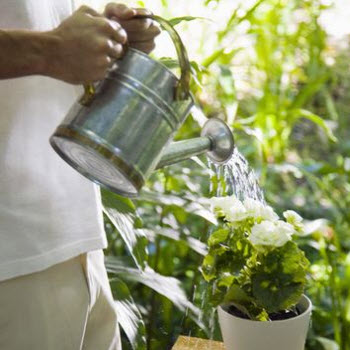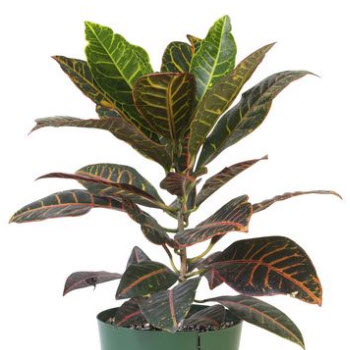Carpe Diem...Real Estate Update
Indoor Planting for Winter
Fall brings shorter days, lower temperatures and -- especially in colder climates -- a dearth of pretty green foliage. If bare tree limbs and umpteen shades of brown are disheartening, try your hand at gardening indoors. Nursery managers and plant experts say just about any common plant may be started inside quite easily. Some houseplants are nearly foolproof.
Plants need water but overwatering is often worse.
Getting Started
Even if you do not have an especially green thumb, indoor gardening is a rather simple process if you follow just a few rules, says horticulturist Nick Snakenberg, curator of tropical collections at Denver Botanic Gardens in Denver. “First, don’t be scared,” Snakenberg said. “You won’t succeed if you don’t try, and don’t be afraid if you’ve got to kill a few (plants) to learn how to grow them.”
The single most important factor when growing plants indoors is the appropriate amount of water. Professional horticulturists say nothing will kill a plant faster than too much water. “The most common error I see is people over-watering,” said Tucker Bantom, general manager of Perino’s Garden Center of Metairie, Louisiana. “They get on a schedule and think they need to water every week, like, ‘I’m going to water every Tuesday.’ Most indoor plants do not -- do not -- need to be watered every week.”
Bantom says people have been granted a first-rate water-testing device that they always have on hand. “Put a finger knuckle-deep in the soil," he said, "and if you feel any moisture, hold off on watering.”
He says “root rot” can occur in as little as 15 minutes and the plant may not show the damage for four or five weeks. Out of fear that plants will die from lack of water, he notes, some people when going on vacation leave their plants sitting in water. “They’ll go out of town and think they need to give a plant extra water because they’ll be gone," he said. "You’re better off under-watering a plant than over-watering, by far,” he said.

If you love a plant that needs plenty of sunlight, consider
rotating to different rooms so you're both happy.
Caring, Careless and Coddling
Another error people make with their indoor plants, Snakenberg says, is the amount of attention they give them: either too much or not enough. “You can’t love it to death, but you can’t neglect it completely,” he said. He recommends putting a plant in a well-lit, highly trafficked area — “one that meets the needs of the plant but not one where you’re going to forget about it.”
If you have a living room that does not receive a lot of natural light, but you want to see the plant when you are in that room, adopt a rotation based on a 50-50 split, Snakenberg recommends. Keep the plant in a well-lit window or room for one week, and on the coffee table or mantel the next week, he says.
“That’s one of the great things about plants," he said. "They can move around.”
Ones to Grow
The forgiving nature of a few plants make them good choices for the novice or the person who does not have as much time as others to devote to indoor plant care.
Sansevieria trifasciata, commonly known as a snake plant or mother-in-law’s tongue, is adaptable to many different levels of light, requires a modest amount of water and rarely needs to be repotted. The houseplant Aglaonema hybrids — or Chinese evergreen — is jokingly named the “closet plant,” says Bantom, because it is “idiot proof.” This adaptable plant, which serves as an air filter, tolerates low light and dry soil and air.
Many of the plants that require the least care produce no flowers. The peace lily (Spathiphyllum wallash), however, produces glossy leaves and white blossoms. It is also very adaptable to light and “is good at telling you when to water,” says Snakenberg, because its leaves wilt or droop when thirsty.
Ming arelia is a personal favorite of Nick Esquivel, a sales associate at Almaden Valley Nursery in San Jose, California. With its weeping, lacy leaves, this undemanding plant resembles a Japanese maple.

Large plants allow for greater latitude of care.
Best Chance of Survival
Large plants allow for greater latitude of care. (photo: Hemera Technologies/PhotoObjects.net/Getty Images)
For cool-weather planting, Esquivel generally recommends opting for a plant at least 2 months old or 4 to 6 inches in height rather than growing from a seed. “The bigger the plant, the easier the care,” said Esquivel. “The larger the plant, the more established it is, so there is less room for error.”
As the plant grows, monitor the soil and how it absorbs water, which indicates when to move it to a new pot. When the roots become confined in the pot, Esquivel said, the roots will push out the soil and the water will run through the pot quickly. At that point, carefully repot the plant with new soil in a pot just a couple inches larger in diameter. If you jump to a much bigger pot, the soil will be loose, which could lead to over-watering, he cautions.
Eventually, fertilizing will be necessary, though it should be done sparingly, says Snakenberg. He suggests half the strength any label recommends.
“It should be just enough food to make it healthy,” said Snakenberg. If you see yellow leaves, it is time to fertilize.

1 comment:
Another informative blog… Thank you for sharing it… Best of luck for further endeavor too.
IDX Website
Post a Comment